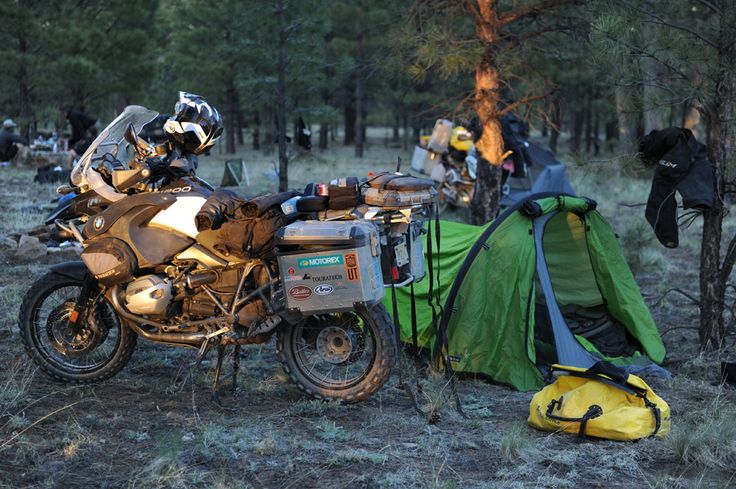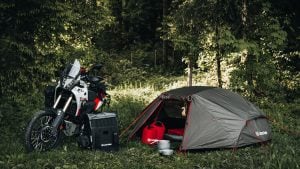If you’re heading off on a multi-day tour and you’re not planning on staying in a hotel then chances are one of the first things you pack into your panniers is your sleeping bag.
The sleeping bag you decide to bring can either make or break your adventure because it doesn’t matter if you’re stopping off at a campsite in Snowdonia or roughing it in the wilds of Siberia, a good night’s sleep is essential. With that in mind, here’s our guide to everything you need to know about sleeping bags.
Keeping warm
When buying a sleeping bag, the first thing you should consider is whether it’s going to keep you warm. Your bag must perform down to the lowest temperatures you expect to encounter on your adventures. If it doesn’t then prepare for some long, cold and uncomfortable nights at best, but if it’s cold enough then the consequences could be fatal.
Pack size and weight
After you’ve considered whether your sleeping bag will keep you warm when you need it to, the next thing you’ll need to decide on is weight and pack size. The most important thing here is whether the sleeping bag will fit into your panniers.
In this case you’ll want a bag that packs down as small as possible while still maintaining thermal qualities. However, lightweight kit is expensive and if you’re travelling solo and don’t mind bungee-cording your bag onto the back of your bike then weight and pack size is less important.
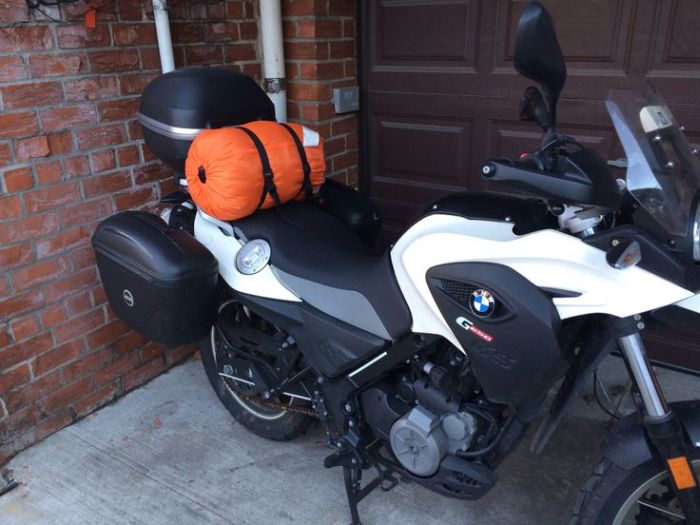
Down vs synthetic
Most sleeping bags either have a down or a synthetic fill. Neither is inferior and they’re both great for certain situations. Down is more expensive than its synthetic counterpart because it generally packs down smaller, has a better warmth-to-weight ratio and will last longer (though there are exceptions to this).
On the negative side, if you get down wet, the feather structure will collapse and it’ll lose its thermal insulating properties. Not only that, but it’ll take a long time to dry. Advances in technology have led to the development of ‘hydrophobic’ down which is said to perform better when wet, but it’s not widely used as yet.
Synthetic bags aren’t going to be like ovens if they get wet but they’ll still maintain some of their thermal properties, plus they’ll dry out a lot quicker than down and they’re generally cheaper. Most bags have a water repellent coating but this isn’t enough to completely stop the fill getting wet so if you’re in a cold and dry environment consider down, whereas cold and damp, like the UK, is better handled by synthetic.
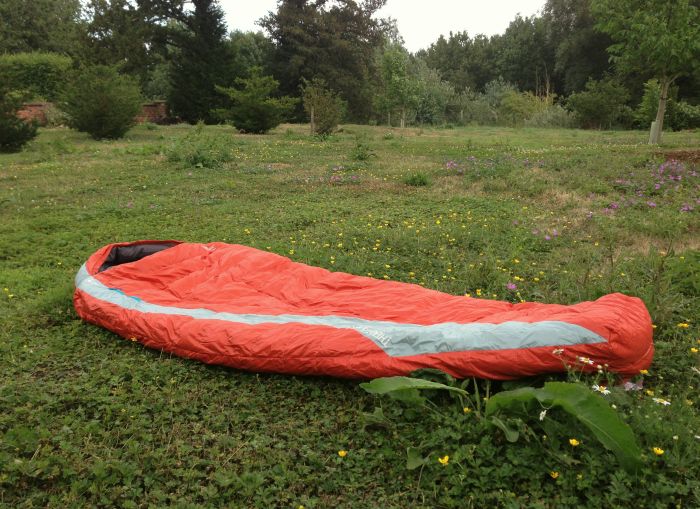
Temperature ratings
All sleeping bags will come with temperature ratings, although these are guides to performance rather than an absolute measure (in the past we’ve found that manufacturer’s claims can be a little overdone). In general bags come with four figures; upper limit, comfort rating, lower limit and extreme rating. Understanding these will help you pick a bag that’s right for you and your adventure.
Upper limit: The upper limit is the maximum temperature at which a ‘standard’ adult will be able to have a comfortable night’s sleep without excess sweating. In other words, how warm it has to be before your bag becomes too hot for the job.
Comfort rating: As the name implies, this is the temperature at which you’ll find your sleeping bag most comfortable and be able to have a decent night’s sleep – not too warm and not too cold.
Lower limit: The lowest temperature at which a ‘standard’ adult can have a comfortable night’s sleep. If the temperature gets below the lower limit then consider wearing additional clothing.
Extreme rating: You’d be best not to rely on the sleeping bag’s extreme rating as it’s the ‘survival only’ rating. If you have to use your bag in its extreme rating then be prepared for a cold, cold night.
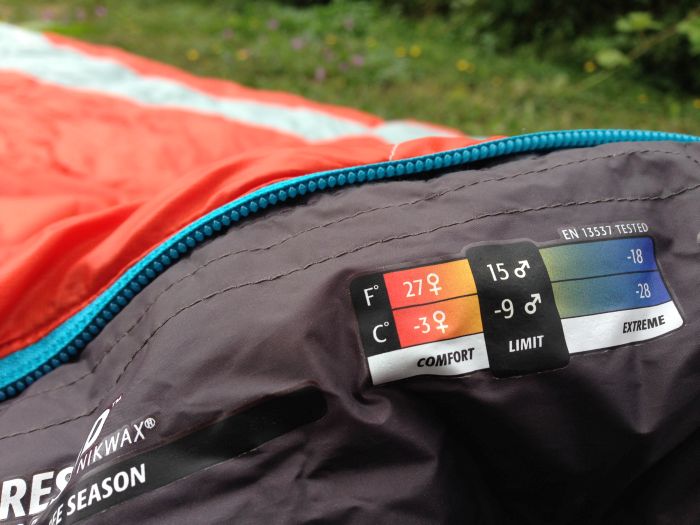
Hood and neck baffle
One of the most frustrating parts of a sleeping bag can be the hood. Too big and you can lose a lot of heat, too small and it becomes a challenge to even get your head to fit. The key here is to make sure you see how much space is available and how easy it is to alter. Does it have an effective toggle mechanism? When the mercury drops below zero, you’ll want something that fits properly, trust us.
Another element that can cause much annoyance is the neck baffle – a piece of material that is positioned around your neck to keep heat in and drafts out. As with the hood, a baffle that is too big can result in a restless night’s sleep if it keeps getting in the way. So you’ll want to make sure that there is enough material for it to remain effective while not being overly excessive.
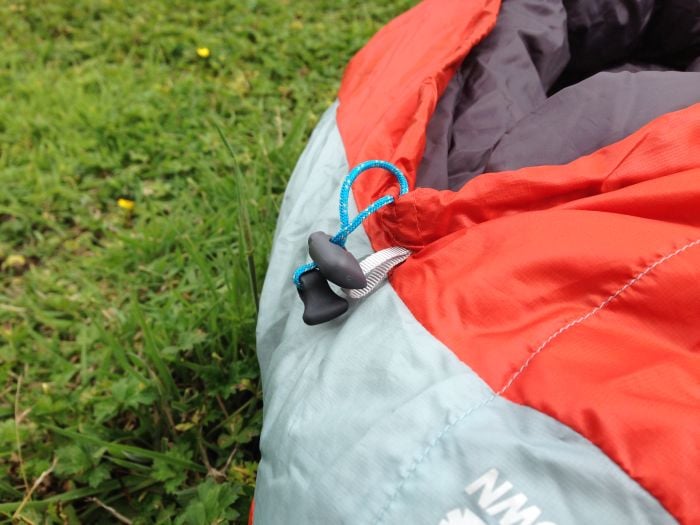
Need a tent to go with your sleeping bag? Check out our round up of the best tents on the market for motorcyclists here.

